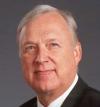Question: Why is "Derivation" Important?The distinction between totipotency and pluripotency covers over the question of derivation. Those who advocate U.S. government funding to support stem cell research wish to avoid the problems associated with restrictions on embryo research; so they exempt stem cells through definition. If stem cells are pluripotent and not totipotent, then they escape prohibitions against the destruction of the embryo for purposes of research. The term "derivation" is brought in to reinforce this move. In a December 1999 draft of the National Institutes of Health (NIH) "Guidelines for Research Involving Human Pluripotent Stem Cells," the Department of Health and Human Services (DHHS) is reported to have concluded that "the Congressional prohibition does not prohibit the funding of research utilizing human pluripotent stem cells because they are not embryos." It further reports that appropriations law (P.L. 105-277, section 511,112 STAT, 2681-386) prohibits funds "for the creation of a human embryo or embryos for research purposes; or research in which a human embryo or embryos are destroyed, discarded or knowingly subjected to risk of injury or death." The problem, of course, is that the human embryonic stem cells are derived from early embryos. So, what to do? The proposed NIH answer, approved by DHHS, is to permit funding for pluripotent stem cell research but deny it for deriving these stem cells from embryos. "DHHS funds may not be used for the derivation of human pluripotent stem cells from early human embryos." What, then, should be the source of hES cells? Laboratory created embryos? No. They should come from IVF clinics, where the original intent was to fertilize ova for implantation. U.S. government funds can be used "only if the cells were derived from early human embryos that were created for the purposes of infertility treatment and were in excess of clinical need of the individuals seeking such treatment." With
regard to hEG cells, the NIH is more lenient. "Unlike pluripotent stem
cells derived from early human embryos, DHHS funds may be used to support
research to derive pluripotent
stem cells from fetal tissue, as well as for research utilizing such cells. Reading between the lines, perhaps we can see Roman Catholic or right-to-life logic at work here. The use of fetal tissue for research is licit when the fetuses result from spontaneous abortions; but it is not licit when elective abortions are involved. Roman Catholics want to avoid any direct or indirect support for elective abortion. Yet, a hint of moral wiggle room seems to exist when deriving stem cells from fetal sources. No wiggle room seems to exist presently in right-to-life thinking regarding the deliberate destruction of embryos. One might surmise that, without saying it, these proposed government guidelines are responding to such concerns regarding the moral inviolability of what is perceived to be the integrity of the embryo, an integrity that goes as far back as the fertilized zygote. Governmental response to this is most appropriate, and welcomed. My only plea is that, if this is the operative thinking, it should be stated clearly as an ethical concern and not hid it under an alleged scientific distinction between totipotency and pluripotency.
Email link | Printer-friendly | Feedback | Contributed by: Dr. Ted Peters |


 Dr. Ted Peters
Dr. Ted Peters

